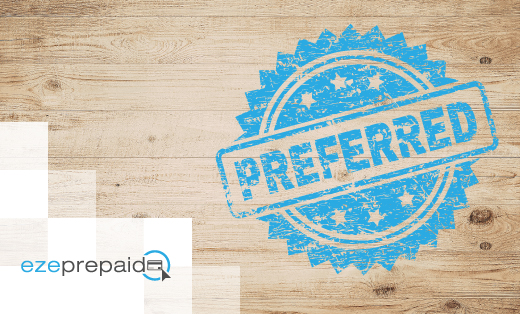How Prepaid Card Incentives are Changing the Way Businesses Operate
Introduction to Prepaid Card Incentives
Prepaid card incentives are shifting the business landscape, letting companies say goodbye to traditional rewards like checks or physical gifts. Unlike the old days where such options were the norm, prepaid cards are the new go-to for rewarding customers or employees. They’re as simple as gift cards but are branded by your business, giving a touch of personalization. Companies load money onto these cards, and recipients can use them wherever major credit cards are accepted. This means they’ve got the freedom to choose their reward. What’s neat is these cards help businesses streamline operations, cut costs, thrill customers, and keep things ticking over smoothly. They are easy to manage, come with less paperwork, and you can even customize them to match your company’s brand. Plus, they’re seen as more modern and flexible compared to older methods. It’s a win-win.

The Evolution of Business Incentives: From Cash to Cards
Back in the day, businesses dangled cash bonuses in front of workers and customers to get them pumped. But here’s the thing – cold hard cash isn’t king anymore. Companies have changed up the game and now they’re throwing prepaid cards into the mix. Why? It’s simple. These cards are like cash but smarter. They’re easier to handle, less risky, and you can’t just lose them in the couch cushions. Plus, when you hand someone a card, it feels like a real gift, more than just an amount in their bank account. So what’s behind this shift?
Here’s the deal. Prepaid cards cut down on the hassle to manage incentives. Imagine stuffing envelopes with bills or writing checks like it’s the dark ages. Not fun. Prepaid cards are quick to hand out and easy for folks to use whether they’re shopping online or in a store.
But it’s not just about ease. Folks like getting something that feels personal. A prepaid card can be branded with the company logo, making it feel like a pat on the back from the big boss. And for the finance team? They’re keeping high-fives all around because these cards make it a breeze to track where the incentive budget is going.
Dollars to cards, my friend. That’s how businesses are playing the incentive game these days. It’s not just changing operations; it’s changing the vibe by making rewards feel special and, let’s be honest, a whole lot less of a headache.
How Prepaid Card Incentives Work for Businesses
Prepaid card incentives are a smart tool for businesses looking to boost sales, reward employees, or push product promotions. Here’s the deal: companies buy these cards and load them with a set amount of money. They hand them out to customers or staff as a reward or thank-you. It’s straightforward – use it like cash or a credit card until the balance hits zero. For businesses, it’s a win-win. They can keep track of spending, set limits, and often customize the cards with their branding. Plus, it’s less hassle than handling cash or physical gifts. And the people who get these cards? They dig the flexibility to buy what they want, when they want. No unwanted gifts, just the freedom to choose. That’s why prepaid incentives are catching on – easy for businesses, awesome for recipients.
The Benefits of Using Prepaid Card Incentives for Companies
When companies embrace prepaid card incentives, they tap into a powerful motivation tool. These cards are like a pat on the back for employees or a wink at customers, telling them their efforts or loyalty haven’t gone unnoticed. But the perks don’t end there; prepaid cards pack a punch with benefits. For one, they simplify the reward process – no more fiddly checks or slow bank transfers. Just hand over a card and boom, it’s celebration time. They also offer choice freedom—recipients can treat themselves to whatever catches their fancy, creating a more personal reward experience. Plus, it’s all about control for the business. You decide the value, you control the distribution, and you can keep a keen eye on how these cards are used. The cards are also a branding goldmine; slap your logo on them, and suddenly, every time someone reaches for their wallet, your company’s name is right there. In short, prepaid card incentives are no one-trick pony; they’re more like a Swiss Army knife for business rewards – versatile, handy, and always well-received.
Types of Prepaid Card Incentive Programs Available for Businesses
Businesses have a few different options when it comes to prepaid card incentives. Rebate cards are popular and work well for promotions, giving customers a prepaid card after a purchase. Promotional cards can entice potential buyers to take a certain action, like test driving a car. There are also employee incentive cards which companies use to reward staff for hitting targets or to celebrate milestones. Customer loyalty cards keep shoppers coming back, by loading rewards onto a card after each buy. Each type serves a unique purpose and offers flexibility to businesses aiming to engage and motivate people in specific ways.
Case Studies: Success Stories Using Prepaid Card Incentives
Let’s talk real-world wins. Companies are smartening up, ditching old-school rewards, and saying yes to prepaid card incentives. Take a national retail chain that was in a pinch to boost sales figures. They switched their focus to prepaid cards as a reward for customers hitting a certain spend threshold. The result? A sharp uptick in purchases. Cardholders felt the immediate joy of spending that bonus on whatever they wanted.
Then there’s this other story—a mobile service provider faced a slump in new sign-ups. They rolled out a prepaid card bonus for new customers. What happened next was no shocker. People flocked, sign-ups soared, and the company laughed all the way to the bank. These success tales aren’t flukes; they’re what happens when businesses get clever with incentives. Prepaid cards have that magic mix—flexible for the user, easy to track for the company. It’s a win-win in a sleek little piece of plastic.
Comparing Prepaid Card Incentives with Traditional Incentive Methods
When businesses think about incentives, they often weigh the benefits of prepaid cards against older methods like cash bonuses or physical gifts. Now, picture this: you hit a sales target, and you get a prepaid card as a pat on the back. It’s sleek, modern, and you can spend it nearly anywhere, just like cash. This is the vibe prepaid card incentives bring to the table. They’re flexible, and recipients like them because they offer freedom to choose. Plus, there’s no fuss about sizes, colors, or brands that typically come with physical gifts.
On the flip side, remember cash incentives? They’re straightforward but come with drawbacks. For the company, dishing out cash can be a hassle with more complex tax implications. For employees, it can feel less personalized and just blend in with the rest of their income.
So here’s the deal: Prepaid cards mean less headache for the business, more choice for the team. A true win-win. And let’s face it, it’s about keeping up with the times. Prepaid cards are just the smart, modern twist on rewarding hard work.
Implementing a Prepaid Card Incentive Program in Your Business
Starting a prepaid card incentive program is a smooth move for your business. It’s a way to motivate employees, please customers, and run promotions without the fuss of traditional rewards systems. Let’s keep this straight: pick a card provider that lines up with what your business aims to achieve. Whether it’s cashback options or cards that work internationally, choices matter. Next, set clear goals. Want to boost sales or reward top performers? Clear targets will keep your program on point. Tailoring the program to your company’s needs is also key. Maybe add a personal touch to the cards, like your logo. Last thing, keep an eye on the numbers. No guessing games here; check how the program’s working so you can tweak it if needed. Simple, efficient, and no drama – that’s how you inject a prepaid card incentive program into your business’s bloodstream.
Legal and Tax Considerations for Prepaid Card Incentives
When businesses use prepaid cards as incentives, they can’t ignore legal and tax issues. It’s clear-cut: prepaid card incentives are taxable. IRS guidelines say any gift card given to an employee counts as income, so yup, you’ve got to report and withhold taxes on it. Beyond the tax man, legally, you’ve got to keep your eyes peeled for regulations on consumer protection and anti-money laundering rules. Some places might also have expiration date regs for these cards. Smart move? Keep tabs on the fine print and maybe get legal advice to stay on the up and up.
The Future of Prepaid Card Incentives in Business Operations
Prepaid card incentives are on the rise, shifting how companies motivate and reward employees and customers. They spell convenience, flexibility, and a touch of modern tech appeal. No hassle with checks or direct bank deposits – it’s all on one handy card. Expect to see businesses leaning heavier on these cards to boost sales, retain top talent, and encourage customer loyalty. They’re reshaping reward strategies, and they’re here to stay. The cost-effective nature and ease of distribution make prepaid cards a sweet deal for businesses of any size. Think direct savings with no extra fees. Plus, personalizing these cards reinforces brand identity each time they’re used. Watch this space – prepaid card incentives are carving a future where gratification is instant, and business operations become smoother.
Contact Sales
Want more information about Ezeprepaid? We're happy to help! We provide quick-to-market prepaid and gift card solutions customized to meet your company’s needs.
"*" indicates required fields


